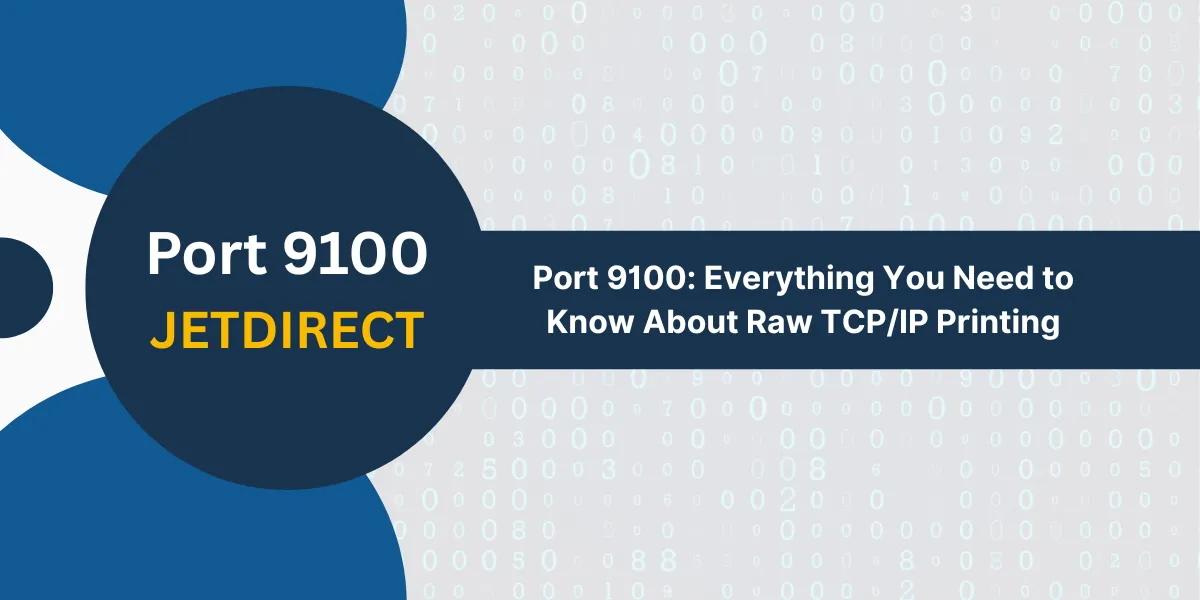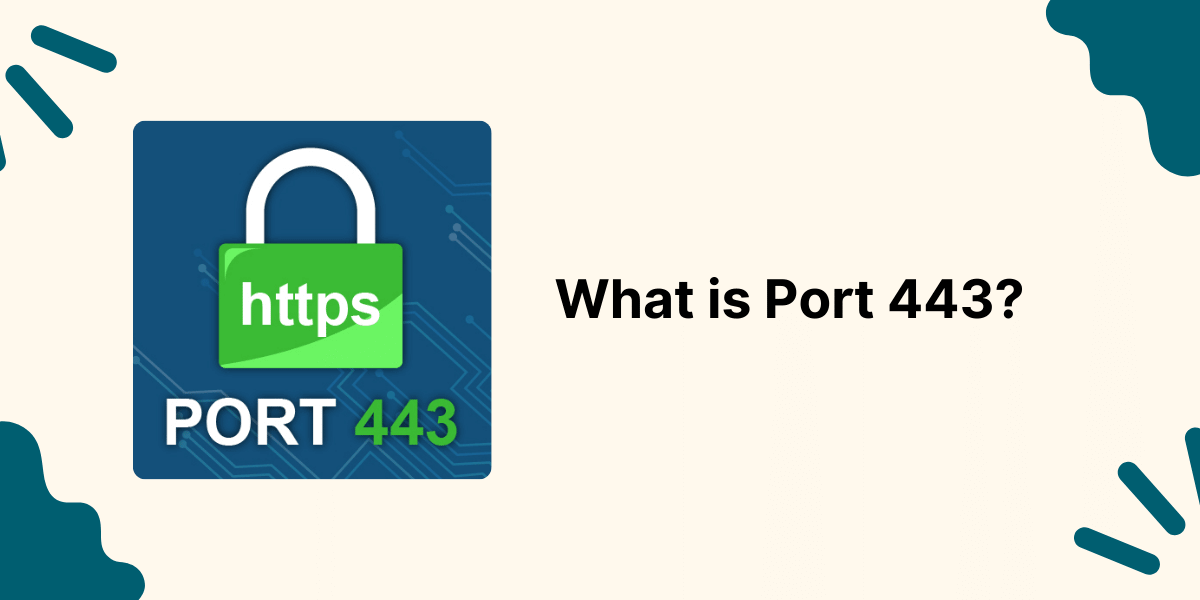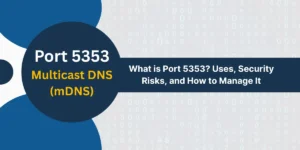What Does Port 9100 Mean?
Port 9100 is a TCP/IP network port used for printer communication. The “raw” printer port functions through network connections to enable direct printing. The default port for receiving print jobs operates on Port 9100 for numerous network printers. The port enables computers to transmit print data directly to network printers without needing additional protocols.
System administrators use Port 9100 to establish network printing capabilities in office settings. The port enables printer-computer communication in both directions which allows devices to exchange status updates and print commands. The standard printer networking choice of Port 9100 continues to be widely used because of its straightforward operation and dependable performance.
What is Port 9100 Used For?
Port 9100 connects computers directly to network printers. It sends print jobs straight to your printer without extra steps or complicated processing.
People use Port 9100 to hook up different printers on their networks:
- Office laser and inkjet printers for your everyday documents
- Label printers for barcodes and shipping tags
- All-in-one devices that print, scan and copy
- Heavy-duty printers in factories
- Receipt printers at stores
- Print lots of documents in busy offices
- Print receipts at checkout counters
- Make shipping labels in warehouses
- Print reports automatically
- Can’t afford printer downtime
How Does Port 9100 Work?
The system functions through a basic yet efficient communication system. Your computer converts documents into printer-compatible language (PostScript, PCL, or raw text) before creating a TCP socket connection to the printer’s IP address on port 9100 to stream formatted data directly into the printer’s memory buffer and receive basic status confirmations through the same connection.
The communication process follows a simple linear order.
- Your computer transforms documents into printer-compatible language (PostScript, PCL, or raw text) during document formatting.
- A TCP socket connection establishes itself to the printer’s IP address at port 9100.
- The printer receives formatted print data directly into its memory buffer.
- The printer sends fundamental confirmation messages and error status reports through the same connection.
- The connection ends after the job finishes successfully.
- The method processes information at a faster rate because it eliminates the multiple processing layers which other printing methods require.
- The method reduces network overhead because it simplifies both protocol complexity and data formatting requirements.
- The system provides real-time feedback which shows both job progress and potential errors.
- The direct connection between devices simplifies the process of troubleshooting problems.
What is the Difference Between Port 9100 and LPR?
The selection of appropriate printing methods depends on understanding the fundamental differences between port 9100 and LPR (Line Printer Remote) protocols. The two protocols operate as separate network printing methods which provide different benefits and restrictions.
|
Feature |
Port 9100 (AppSocket) |
LPR Protocol (Port 515) |
|
Connection Type |
Direct TCP socket |
|
|
Setup Complexity |
Minimal configuration |
Requires queue names |
|
Data Format |
Raw data stream |
Formatted job files |
|
Status Feedback |
Basic connection status |
Detailed job status |
|
Authentication |
None (unless network-secured) |
Basic username/host validation |
|
Connection-based |
Protocol-level error codes |
|
|
Compatibility |
Modern printers |
Legacy Unix/Linux systems |
Port 9100 vs Other Network Printing Methods
|
Printing Method |
Port Used |
Protocol Type |
Setup Complexity |
Speed |
Reliability |
|
Port 9100 (AppSocket) |
9100 |
TCP Direct |
Low |
High |
Very High |
|
LPR/LPD |
515 |
TCP/IP |
Medium |
Medium |
High |
|
IPP (Internet Printing) |
631 |
HTTP/TCP |
Medium |
Medium |
High |
|
SMB/CIFS Sharing |
445/139 |
Windows Sharing |
High |
Low |
Medium |
|
USB Direct |
N/A |
Local Connection |
Very Low |
Very High |
Very High |
How to Enable Port 9100?
To enable port 9100 you need to configure both printer settings and network parameters for direct TCP communication. The process of enabling port 9100 follows standard procedures which work for most devices although specific steps differ based on printer models and network configurations.
Printer Configuration Steps
To enable port 9100 on your network printer follow these steps:
- Your browser should have printer interface access by entering printer IP address
- The network settings can be accessed through sections labeled “Network,” “Connectivity,” or “Services”
- The “Raw TCP,” “AppSocket,” or ”JetDirect” configuration options should be located within TCP/IP settings
- Verify the printer listening service is activated while checking the port number should match 9100 exactly.
- Save configuration - Apply changes and restart the printer if required
- The printer should be checked for its ability to respond to network connections through port 9100.
Network Firewall Configuration
The following procedure should be followed to ensure the network infrastructure supports port 9100 communication:
- Check your firewall rules to verify that port 9100 remains unblocked for both incoming and outgoing traffic.
- Access controls need to be set to enable TCP communication between client machines and printer addresses.
- The printer network segment must have bidirectional communication capabilities enabled.
- Network tools need to be used to verify that data transmission occurs successfully.
- Document configuration - Record firewall rules for future troubleshooting and maintenance
Windows Computer
Windows computers need port 9100 configuration for printing purposes.
- Open Control Panel - Navigate to ”Devices and Printers” section
- To add a printer, go to “Add a printer” then choose “Add a local printer”
- The “Create a new port” option should be selected followed by “Standard TCP/IP Port”
- Enter printer details - Input the printer’s IP address and specify port 9100
- The wizard should be followed for driver installation.
- To verify the configuration works properly, test print a sample document.
Linux System Configuration
To enable port 9100 printing on Linux systems, users should use CUPS.
- Open a web browser to access the CUPS interface at http://localhost:631.
- From the administration menu select “Add Printer” to begin the printer setup.
- To connect your printer you need to select ”AppSocket/HP JetDirect” as your connection method.
- Enter the printer URI as socket://printer-ip-address:9100.
- Select driver – Choose appropriate printer driver from the CUPS database
- Select default options – Determine paper size along with print quality and additional settings.
- A test page should be printed to verify the successful setup.
Verification and Testing
Use these diagnostic methods to verify port 9100 connectivity after configuration:
- Basic connectivity test – Use telnet command telnet printer-ip 9100 to verify port accessibility
- Print a basic document using the printer connection that has been established.
- The packet capture tools verify data transmission on port 9100 through network traffic monitoring.
- Check printer status pages for printer log analysis to verify job reception messages.
- Time print jobs to check the performance of speed and reliability
Why Choose Port 9100 for Network Printing?
The introduction of port 9100 transformed network printing by making it possible to operate without needing dedicated print servers in various network environments. Network printing prior to port 9100 required either a computer to function as a print server or complicated network protocols which proved hard to set up and maintain.
Enterprise Benefits
The enterprise sector selects port 9100 because of its multiple significant advantages.
- IT administrators can deploy hundreds of printers through IP addresses and port specifications for simplified deployment.
- The elimination of dedicated print servers reduces infrastructure expenses in various operational scenarios.
- The direct printer connections enable IT professionals to solve problems more efficiently.
- The system design allows simple printer addition without requiring network reconfiguration.
- The system operates without issues between Windows, Mac and Linux platforms.
Print Server Applications
The main communication protocol for print server applications utilizes port 9100.
- Hardware print servers operate as specialized devices which enable legacy printers to join contemporary networks.
- The software applications operate on Windows, Linux and Unix operating systems.
- Cloud print services employ port 9100 to enable local printer communication.
- The print job distribution system utilizes multiple printers to achieve maximum performance.
Industrial and Manufacturing Environments
Specialized printing equipment in industrial and manufacturing settings relies on port 9100 for essential applications.
- The systems produce barcodes through label printer operations for inventory tracking and shipping purposes.
- The receipt printers operate as point-of-sale devices for transaction processing and customer record management.
- The industrial marking process requires product labeling and compliance documentation.
- The warehouse management system provides real-time inventory updates together with location tracking functionality.
- The manufacturing execution system prints work orders and generates production schedules.
How to Fix Common Port 9100 Problems?
Connection Problems The most frequent issues involve network connectivity problems, incorrect IP addresses, or firewall blocking. The first step of troubleshooting requires checking the printer’s IP address and performing network connectivity tests with ping commands and verifying that port 9100 remains open and active on the printer.
Print Job Failures The main reasons for document printing failures through port 9100 include printer language misconfiguration and print job size exceeding printer memory capacity and network data transmission time-outs. The printer status pages and network logs should be monitored to detect the exact failure points.
The main causes of slow printing through port 9100 include network congestion and printer memory restrictions and document formatting inefficiencies. The printing of large graphics-heavy documents needs optimization or alternative printing approaches to achieve better performance.
How to Set Up Port 9100 on Different Systems?
To add a printer in Windows select “Add a local printer” then choose “Create a new port” followed by “Standard TCP/IP Port” and enter the printer IP address with port 9100 specified. The printer model detection and driver installation will happen automatically through Windows.
The CUPS (Common Unix Printing System) allows Linux systems to configure printers that use port 9100. The command lpadmin -p printername -E -v socket://192.168.1.100:9100 -m driverfile.ppd enables printer addition with a particular IP address and port specification.
Network devices such as routers and managed switches enable users to set traffic priority and monitoring for port 9100 communications. The setup proves essential for environments that need to handle large printing volumes or maintain quality-of-service standards.
Final Thoughts
Port 9100 continues to demonstrate its lasting importance in network printing environments across the globe. The combination of simplicity and reliability and universal compatibility makes port 9100 an ideal selection for organizations that want easy printer deployment and management. The direct communication method of port 9100 provides reliable performance without requiring complex setup procedures even though newer protocols offer better security features.
The optimal performance of printing systems depends on understanding port 9100 capabilities and proper implementation for both small office networks and enterprise-scale printing infrastructure. Your selection between port 9100 and alternative protocols for printing solutions should consider your security requirements and network architecture and compatibility needs.
Frequently Asked Questions (FAQs) about Port 9100
Is Port 9100 secure?
Port 9100 lacks built-in security features. Network administrators should restrict access to this port through firewalls. Organizations can implement IPsec or printer access controls for additional security.
What protocols use Port 9100?
The RAW protocol operates on Port 9100 for printing purposes. The protocol delivers print data directly to printers because it requires no extra processing or formatting steps.
Can I change Port 9100 to another port?
Network administrators can modify the standard printing port through printer settings. Most printers enable users to configure ports through their web interface or control panel.
Why is Port 9100 called the JetDirect port?
HP created the JetDirect hardware which enabled network printing through Port 9100. The port established itself as a standard connection method for printers between different manufacturers.
How do I check if Port 9100 is open?
Users can verify Port 9100 status by using network scanning tools such as Nmap. Users can check port availability on Windows systems by running the command ”telnet printer_ip 9100″.

Priya Mervana
 Verified Web Security Experts
Verified Web Security Experts
Priya Mervana is working at SSLInsights.com as a web security expert with over 10 years of experience writing about encryption, SSL certificates, and online privacy. She aims to make complex security topics easily understandable for everyday internet users.



